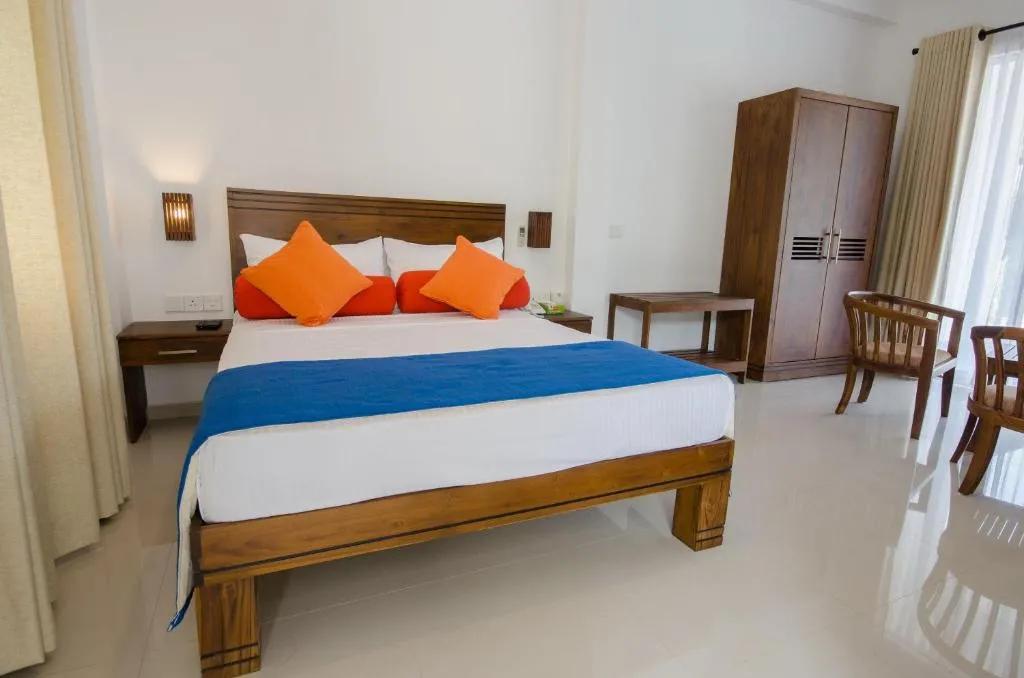
Known as the "Pearl of the Indian Ocean," Sri Lanka photography offers an incredible spectrum of opportunities that few destinations can match.
From the ancient Lion Rock of Sigiriya to the misty mountains dotted with tea plantations, every corner of this island nation tells a unique visual story. Whether you're tracking leopards in Yala National Park or capturing the silhouettes of stilt fishermen against a golden sunset, the photographic possibilities are endless.
The best part? The island's dry season from December to April provides perfect conditions with clear skies and stunning golden hour light, particularly during sunrise and sunset. As a professional photographer who's spent years exploring these locations, I'll share my tested techniques for capturing Sri Lanka's diverse landscapes, wildlife, and cultural heritage.
Ready to elevate your photography skills in one of the world's most photogenic destinations? Let's dive into the essential tips and secrets that will transform your Sri Lanka photography journey.
Essential Camera Gear for Sri Lanka Photography
Capturing Sri Lanka's diverse landscapes and wildlife demands specialized photography equipment that can handle the tropical climate. Subsequently, proper gear selection becomes crucial for successful shoots across various locations.
Weather-Proofing Your Equipment in Tropical Climate
The main challenge in Sri Lanka's tropical environment is managing humidity and condensation. Specifically, when moving between air-conditioned spaces and outdoor locations, lens fogging becomes a significant issue. To prevent this, place your camera bag outside an hour before shooting to allow gradual temperature adjustment. Furthermore, store your gear in sealed bags with silica gel desiccant packets to maintain optimal humidity levels.
Lens Selection for Different Locations
For wildlife photography, a telephoto lens with at least 200mm focal length is essential. Additionally, landscape photographers should consider carrying a wide-angle lens for capturing expansive tea plantations and coastal scenes. The Photographer's Ephemeris app proves invaluable for planning landscape shots.
Must-Have Accessories for Sri Lankan Conditions
Essential accessories for Sri Lankan photography include:
- Weather-sealed camera bags with proper insulation
- ND filters for waterfall and seascape photography
- Small, sturdy tripod for long exposure shots
- Microfiber lens cloths for managing moisture
- Protective rain covers for unexpected tropical downpours
When shooting in national parks, bean bags provide crucial stability for telephoto lenses during vehicle-based safari photography. For temple photography and cultural sites, maintaining a compact kit helps navigate restricted spaces while respecting local customs.
Mastering Sri Lanka Landscape Photography
Mastering landscape photography in Sri Lanka requires understanding the unique challenges of tropical environments. First, let's explore the essential techniques for capturing this island's diverse scenery.
Golden Hour Techniques for Tropical Settings
Unlike temperate regions, Sri Lanka's golden hour presents distinct characteristics. The best shots come from shooting 45 minutes before sunrise or sunset. Moreover, cloudy conditions often create optimal lighting throughout the day, especially in forest areas. Indeed, the most captivating moments occur as sunlight breaks through morning mist, creating painterly effects in your images.
Capturing Tea Plantations and Mountains
The rolling hills of tea plantations demand specific approaches for compelling compositions. Pre-visualization plays a crucial role - scout locations during different times and arrange transportation for optimal shooting conditions. For dynamic tea plantation shots, try these proven techniques:
- Frame peaks against the sky using leading lines of ridges
- Incorporate surrounding flora for scale and context
- Slow down shutter speed to capture workers' movements
Coastal Photography Tips and Tricks
Sri Lanka's coastline offers dramatic photography opportunities. The key lies in timing - shoot during low tide to capture reflections on smooth, wet sand. Similarly, position yourself low to the ground to unite shore and sky reflections in a single frame. For coastal landscapes, seek out rugged elements rather than typical palm-tree scenes to add drama to your compositions.
Ultimately, successful landscape photography in Sri Lanka depends on adapting to local conditions. Notably, the rainy season often provides the most atmospheric shots, with mist and dramatic lighting creating unique opportunities. Likewise, seeking elevated viewpoints, such as observation towers or strategic hiking locations, can yield fresh perspectives on familiar scenes.
Nature and Wildlife Photography Secrets
Photographing wildlife in Sri Lanka demands precise technical skills and understanding of animal behavior. Consequently, mastering the right camera settings becomes crucial for capturing these fleeting moments.
Camera Settings for Wildlife Safari
For safari photography, the optimal settings depend on your subject's movement and available light. Primarily, use these proven settings for sharp wildlife images:
- Shutter speed: 1/1250 for moving animals, 1/400 for static subjects
- Aperture: f/2.8 for low light conditions
- ISO: 800-1000 for standard conditions, up to 6000 with newer cameras
Photographing in National Parks
Sri Lanka's national parks offer unique photography opportunities, coupled with distinct challenges. In effect, Wilpattu National Park's forested environment requires shooting through natural gaps in vegetation, creating compelling framed shots. Meanwhile, Minneriya National Park presents excellent opportunities for photographing elephant herds, primarily during July to September.
Bird Photography Techniques
Important to realize, Sri Lanka hosts 492 bird species, including 219 breeding residents. For successful bird photography, maintain a slower approach - study their behavior patterns before shooting. Hand-holding your camera often works better than using a tripod, as it allows quick reactions to bird movements. A 300-400mm lens proves ideal for most situations, offering both reach and maneuverability in dense forest conditions.
Cultural Photography Essentials
Respecting cultural sensitivities forms the cornerstone of exceptional photography in Sri Lanka. Primarily, understanding local customs and traditions enhances both your images and experiences.
Temple Photography Guidelines
Sacred sites in Sri Lanka follow strict photography protocols. Accordingly, leather articles like camera straps and bags are prohibited in many Hindu temples. Essential temple photography rules include:
- Remove footwear and hats before entering
- Never pose with your back to Buddha statues
- Avoid flash photography near murals or paintings
- Maintain head level below Buddha statues and monks
- Seek permission before photographing inside temple complexes
Street Photography Ethics
Street photography in Sri Lanka demands a thoughtful approach. Essentially, asking permission before photographing people shows respect and often leads to more authentic portraits. Nevertheless, avoid paying for photo opportunities, as this can encourage a begging mentality.
Portraiture Tips and Local Etiquette
Understanding local customs enriches portrait photography experiences. A friendly gesture or smile, coupled with pointing to your camera, often communicates your intentions effectively. For traditional dress portraits, patience and genuine interest in local culture yield better results.
When photographing monks or at religious sites, maintain appropriate distance and never interrupt ceremonies or prayers. Overall, showing appreciation by sharing photos with subjects creates positive connections - consider printing copies or sending digital versions through local contacts.
Remember that minority groups often prefer not to be photographed, and always respect when someone declines a photo request. By following these cultural guidelines, your Sri Lanka photography will reflect both artistic vision and cultural awareness.
Conclusion
Sri Lanka stands as a photographer's paradise, offering endless opportunities through its rich tapestry of landscapes, wildlife, and cultural heritage. After years of capturing this beautiful island nation, I can confidently say that success lies in the perfect blend of technical expertise and cultural awareness.
Equipment protection becomes essential while shooting in tropical conditions, though proper preparation allows you to focus solely on creating stunning images. Likewise, understanding the nuances of golden hour photography and wildlife behavior will significantly enhance your shots.
Most importantly, approaching photography with respect for local customs and traditions creates meaningful connections that transcend mere images. Through careful planning, proper gear selection, and cultural sensitivity, you'll capture authentic moments that tell compelling visual stories.
Remember, mastering Sri Lanka photography requires patience, practice, and adaptability. Start with these proven techniques, develop your unique style, and let the Pearl of the Indian Ocean inspire your creative journey.
FAQs
Q1. What are the best camera settings for wildlife photography in Sri Lanka? For wildlife photography in Sri Lanka, use a shutter speed of 1/1250 for moving animals and 1/400 for static subjects. Set your aperture to f/2.8 for low light conditions and adjust your ISO between 800-1000 for standard conditions, or up to 6000 with newer cameras.
Q2. How can I protect my camera gear in Sri Lanka's tropical climate? To protect your gear, use weather-sealed camera bags and store equipment in sealed bags with silica gel packets. Place your camera bag outside an hour before shooting to prevent lens fogging, and always carry microfiber lens cloths and protective rain covers.
Q3. What are the essential guidelines for temple photography in Sri Lanka? When photographing temples in Sri Lanka, remove footwear and hats before entering, avoid posing with your back to Buddha statues, refrain from using flash near murals or paintings, and always seek permission before taking photos inside temple complexes.
Q4. What's the best time for landscape photography in Sri Lanka? The best time for landscape photography in Sri Lanka is typically 45 minutes before sunrise or sunset. Cloudy conditions often create optimal lighting throughout the day, especially in forested areas. The rainy season can also provide atmospheric shots with mist and dramatic lighting.
Q5. How can I approach street photography ethically in Sri Lanka? For ethical street photography in Sri Lanka, always ask permission before photographing people. Use friendly gestures or smiles to communicate your intentions. Avoid paying for photo opportunities, and respect when someone declines to be photographed. Sharing photos with your subjects can create positive connections.



